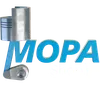MAINTANANCE INSTRUCTIONS for Documents and Media
Documents and media form the authoritative knowledge base behind every high-performance engine. This article category includes service manuals, parts catalogs, service bulletins, wiring diagrams, calibration files, 3D exploded views, and training media that guide technicians through each task from commissioning to overhaul. In marine engine and diesel engine environments, these resources translate engineering intent into repeatable, safe, and efficient work on real equipment. They turn complex assemblies into clear, step-by-step procedures and underpin compliance, uptime, and lifecycle value.
Practical, engine-specific documentation is not an optional extra; it is a core operational component. When paired with accurate MAINTANANCE INSTRUCTIONS for OEM parts, the right documents and media reduce diagnostic time, prevent rework, and protect critical components such as cylinder heads, injectors, turbochargers, and control systems. For purchasers and technical decision-makers, access to current, serial-number-aligned files is a direct lever on total cost of ownership and fleet reliability.
Technical function of Documents and Media with MAINTANANCE INSTRUCTIONS for marine engine and diesel engine assets
In daily operations, documents and media serve as the procedural control system for the mechanical and electronic control system. Installation guides define shaft alignment and baseframe procedures; torque charts and clearances ensure correct fastener preload; lubrication schedules protect bearings and liners; wiring diagrams and I/O tables prevent control logic errors; and calibration notes align ECM software, sensors, and actuators. Video modules and 3D visuals shorten the learning curve for complex tasks like fuel injection timing or turbocharger balancing. When MAINTANANCE INSTRUCTIONS reference OEM parts, they specify exact tolerances, surface finishes, torque-angle methods, sealants, and torque sequences—details that directly affect combustion quality, emissions, and fuel economy.
Digitally, this category includes searchable PDFs, data sheets, BOM-linked parts lists, and secure calibration packages. QR codes or serial-number lookups link physical components to the latest procedures and service bulletins. The result is fewer interpretation errors, faster MTBR/MTBO achievement, and safer execution in confined or offshore spaces.
- · Engine-specific, revision-controlled service manuals.
- · Clear MAINTANANCE INSTRUCTIONS for diesel engine and marine engine tasks.
- · BOM-linked parts catalogs mapped to OEM parts numbers.
- · Verified torque charts, clearances, and tightening sequences.
- · Up-to-date service bulletins and component change notices.
- · Wiring diagrams, PLC/ECM I/O lists, and calibration guidelines.
- · Commissioning, overhaul, and troubleshooting checklists.
- · Secure digital delivery; searchable, multilingual formats.
- · Cross-references to tools, consumables, and test parameters.
- · Fleet-level configuration control and compliance support.
Importance for engine operation and lifecycle
Accurate documents and media are central to reliability engineering. Engines achieve design performance only when each intervention follows defined methods. Without current MAINTANANCE INSTRUCTIONS, common failure modes escalate: incorrect head bolt preload leads to gasket blow-by, mis-set injector protrusion causes poor atomization and hot spots, and improper bearing crush invites early fatigue. Out-of-date wiring diagrams can cause mis-terminations that trip safety interlocks or damage modules; missing calibration notes can desynchronize ECM maps and sensors, increasing fuel burn and emissions.
Risks of outdated or incomplete documentation
When procedures are incomplete or obsolete, the probability of rework and unplanned downtime spikes. Crews lose time reconciling conflicting sources, consumables are wasted, and class or flag-state compliance may be jeopardized. In severe cases, overspeed, lube starvation, or thermal runaway can result from seemingly minor procedural deviations. By contrast, current documents and media with engine-specific MAINTANANCE INSTRUCTIONS keep maintenance intervals aligned with condition-based indicators, sustain optimal combustion, and preserve the service life of rotating and reciprocating groups.
Advantages of OEM spare parts suitable for Documents and media
Technical files deliver their value fully when they reference and are applied with OEM spare parts. Procedures written around exact geometries, materials, and tolerances ensure that each torque spec, press fit, shim pack, and calibration value matches the component on the bench. This alignment avoids guesswork, minimizes installation variability, and protects high-value assemblies under peak loads. For diesel engines in mission-critical duty, combining MAINTANANCE INSTRUCTIONS with OEM parts provides consistent thermal behavior, sealing integrity, and dynamic balance—key drivers of efficiency and reliability.
From a budget perspective, the synergy between documents and OEM spare parts reduces lifecycle cost by lowering rework, shortening dock time, and preventing consequential damage. It also streamlines procurement: part numbers, service kits, and procedures are cross-referenced, avoiding mismatches and duplicate purchases. For fleets, standardized instructions tied to approved parts create repeatable outcomes across vessels and sites.
MOPA: fast, secure supply of OEM parts and documentation
MOPA is an experienced and reliable partner for OEM spare parts and Documents and media. Our team matches manuals, parts lists, and service bulletins to specific engine models and serial ranges, ensuring that MAINTANANCE INSTRUCTIONS reflect the latest engineering changes. We prioritize speed, quality, and security in the trade of OEM parts for diesel and gas engines—delivering validated documentation packs alongside precisely identified components. Customers benefit from rapid quotations, traceable logistics, and controlled digital distribution that protects data integrity while placing critical files exactly where crews need them.
Whether you are planning a dry-dock overhaul, emergency repair, or fleet documentation refresh, MOPA aligns the right OEM parts with the correct procedures, calibration notes, and checklists—so every task is executed safely and efficiently the first time.
Conclusion: MAINTANANCE INSTRUCTIONS that protect assets
Documents and media provide the procedural backbone for safe, efficient engine work, turning complex assemblies into consistent, auditable tasks. When paired with OEM spare parts and current MAINTANANCE INSTRUCTIONS for marine engine and diesel engine applications, they maximize reliability, performance, and service life while protecting budgets and schedules.

